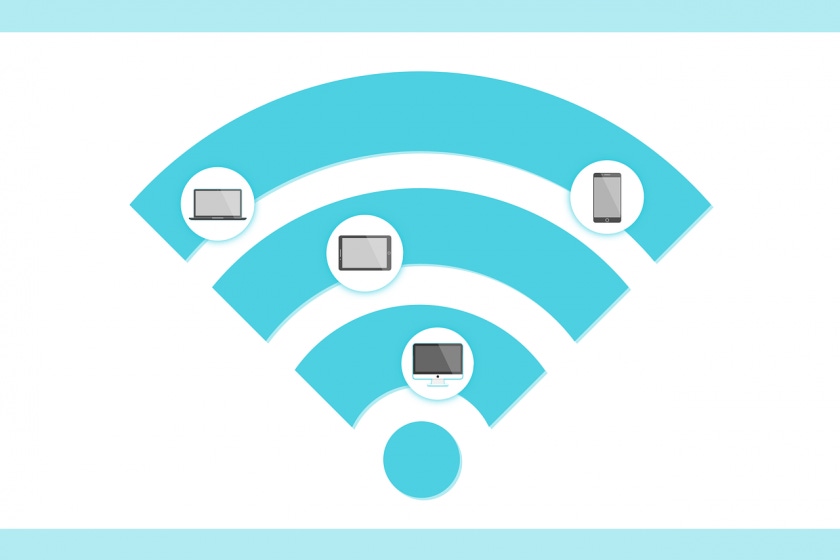Verticals and the Road to Wi-Fi 6 DeploymentsVerticals and the Road to Wi-Fi 6 Deployments
Because 802.11ax is revolutionary rather than evolutionary, adoption requires more than an upgrade. Technology evaluation and planning should begin today.
May 3, 2019

With Wi-Fi 6 gear available now from numerous vendors, you can expect mounting interest in 802.11ax, the latest version of the over 20-year old wireless protocol. That’s because it targets contention, congestion, and supports more devices and offers super-fast data speeds.
Not all industries are expected to embrace Wi-Fi 6 on an as-soon-as-available basis. And not all use cases require fast action. Further, expect some businesses-to-consumer implementations first, with yet others focusing on in-building B2B applications that should launch later.
Let’s take a look at a handful of industries to determine where and when we may see Wi-Fi 6 implementations.
First up?
We should see stadium implementations first as venue owners look to stay ahead of fast-rising use of Wi-Fi at sporting events, concerts and other mass entertainment gatherings where large audiences are located in relatively dense venues for hours at a time. Attendees send and shares photos, videos and more via social media during the entertainment, creating congestion for many current stadium Wi-Fi networks.
The Wi-Fi 6 protocol in new access points was designed to alleviate, if not eliminate, the resulting congestion as more attendees make greater use of stadium Wi-Fi. New and enhanced team apps provide expanded capabilities (video clip viewing, audio feed, and shopping) from their smartphones.
Show me the money
Use of team and stadium apps generate data analytics that are used by venue owners to offer event fans more personalized experiences, with push notifications reaching out to engage them and hopefully ring the cash register. Making concession ordering easier can boost spending. So can rewards programs with businesses such as drive-through coffee shops for example.
Great expectations
It's a case of demand-and demand in the hospitality industry be it hotels, conference centers, amusement parks, and just plain tourist traps. Customers expect contention- and congestion-free Wi-Fi since they're away from home and/or work but want to do many of the same things while away.
Concurrently, hospitality businesses need that same, frustration-free Wi-Fi service to meet customer expectations and stream guest applications including 4K video, eSports games and support virtual reality. Wi-Fi 6 is the perfect solution as it offers four-times the speed of the previous iteration.
Though it doesn’t have the density of a packed stadium for 3-4 hours, hotels have a high user concentration for a far longer stay. That’s why hotels and conference centers need a Wi-Fi solution for their captive business and pleasure audiences. Wi-Fi 5 is challenged to support a wide variety of devices in high-density areas.
Drive time
In-vehicle tech can be credited with reshaping an auto industry which is now cutting passenger car models – if not entire lines – in search of sustained sustenance. Dealers continue to cling to extended services plans for additional revenue streams. The auto industry took a very early cue from OnStar and has now focused on in-vehicle communications and networking tech.
It’s tough to buy a new car, SUV, or truck without a built-in, pay-extra “tech package” aimed at supporting consumer electronics devices and their increased usage during drive times. Adding tech that turns these devices into Wi-Fi hotspots took some time but was worth the industry’s wait. Wi-Fi 6 will join the standard tech packages, but not for a few years.
Qualcomm announced a chipset solution at the Mobile World Congress confab in January. The units are available for sampling by the vendor's partners, with the chipmaker predicting it doesn't expect to see them in new vehicles until 2021. Current Wi-Fi should hold for some time, especially given new vehicle purchasing (and leasing) cycles. Therefore, it will be interesting to see when automakers might embrace Wi-Fi 6, and in what type vehicles as luxury car models, SUVs and trucks are the top money makers.
Healthy choices
In the healthcare business, reduced latency and superior resource allocation are big lures, but fear of disruption in clinical care is a concern in this conservative industry. On what looks lie a longer road to implementation than other verticals, chief medical officers (CMOs) would be well-advised to include doctors and nurses in the testing and evaluation process for valuable input. That's because Wi-Fi 6 needs to be seamlessly implemented in a sea of devices, and across networks, without disrupting patient care.
“Wi-Fi 6 brings a seismic shift in speed – and security questions – in healthcare where hackers sell patient data at a huge markup,” explained Frank Cutitta, Senior Director, HIMSS Media Labs. So, when it comes to being among the earliest of implementors, "fear of missing out (FOMO) can be replaced with the joy of missing out as everything needs to be buttoned down."
The road ahead
Because 802.11ax is revolutionary rather than evolutionary, adoption requires more than an upgrade. Wi-Fi 6 is valued far beyond big speed increases as it prioritizes more effective spectrum use for current Wi-Fi 5 (802.11ac) and forthcoming Wi-Fi 6 access points and device clients.
Some businesses may hold off until the Wi-Fi Alliance begins its product certification program, which is expected to begin in the third quarter. But that shouldn’t impede the technology evaluation and planning processes, which can begin today.
Read more Network Computing articles on Wi-FI here:
AI-Driven Wireless Is Key to the Digital Workplace
Wi-Fi 6 is Coming: It’s Not Too Early to Plan for 802.11ax
Troubleshooting Wi-Fi Performance: Don’t Overlook the Antenna
About the Author
You May Also Like




